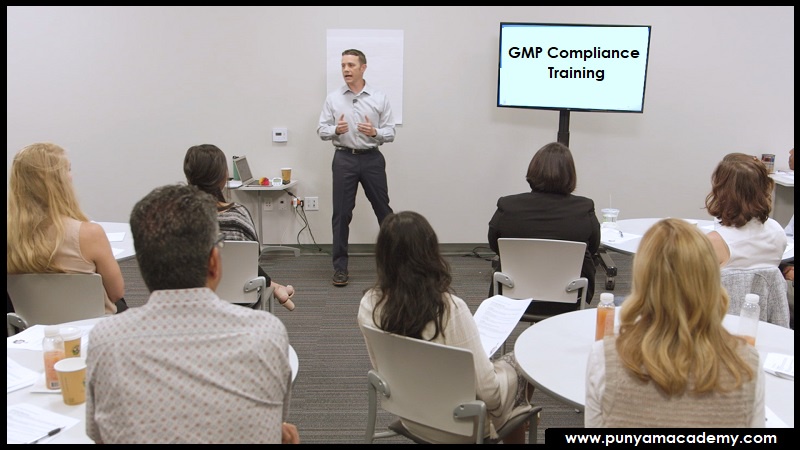GMP training programs are critical for assuring regulatory compliance as well as product safety, quality, and efficacy. GMP training is required for both pharmaceutical producers and ingredient suppliers. Importantly, GMP training and certification are recognized as quality standards in the global market. The training also ensures that employees complete the jobs as directed and encourages employees to tell the supervisor if there are any deviations from the instructions, equipment difficulties, or strange appearance of the material. In addition to preserving all necessary GMP documents, it stipulates the need for the completion of records that attest to compliance with instructions. Training guarantees that both the location and the processes are under control. Reminds employees of the policies and guidelines that govern site operations. Here are mentioned 07 key steps that help to conduct effective GMP training.
Step 1: Analyse the organizational requirements:
Examine any GMP regulations and guideline documents that apply. Understanding the needs is the first step in running any type of training program. Begin by thoroughly reviewing all applicable rules, such as regional legislation, API/bio-security regulations, and product-specific GMP standards. Maintain current copies of the regulations on your central system and ensure that staff has access to them as needed. Document the entire procedure and make a note of any areas of concern in terms of quality control and noncompliance. It is beneficial to analyze any warning letters or audit findings about the organization OR other companies in the same region producing similar product categories.
Step 2: Evaluate the organizational charts and role descriptions:
In this step, a company must determine what its employees, contractors, and suppliers must understand. In addition, what GMP courses and PIC/S GMP Annexes will the trainees need to complete to meet GMP training requirements? And what role-relevant/product-relevant training have they already completed that is documented/signed? This must be known to plan the training.
Step 3: Perform a gap analysis of GMP training gaps including competency assessments:
This step includes gaining a better understanding of the skills and knowledge required for each role type (and each person) in the business. This stage will most likely take a significant amount of time, depending on the size of the business, current production schedules, and thoroughness of earlier training records. However, it is a necessary stage for training success.
- What initial GMP compliance training did each employee receive?
- Was it delivered by whom, and were all individuals given the same types and degrees of training — or was there too much variation in how these people were trained?
- How detailed are their training records?
- Is the GMP training status of production line staff and/or contractors kept up to date for Department Managers and Quality Associates?
- Is there a compliance gap in terms of education/training or qualifications, or does the current Competency Assessment demonstrate proficiency in the employee's required knowledge and/or skillsets?
Step 4: Develop a plan that includes self-paced training as well as face-to-face training & live-streamed training sessions:
You may also be sure that the GMP training records will be carefully inspected. Several FDA warning letters, TGA audit findings, and other regulatory reports all mention training gaps. Many regulators will value a blended training program that includes continuous sessions for every employee and contractor as needed. Make sure they get training appropriate to the product. Consider the quickest way to bring the teams up to speed on the GMP compliance training needs if an audit is imminent. A best practice is to offer training flexibility to encourage completion and save time. A range of options is available for finishing training through GMP education programs.
Step 5: Try to find direct feedback on the draft training plan:
Plans for GMP compliance training should be reviewed by the department managers and, if necessary, approved in writing by the relevant staff members. This is another good time to ask the employees and their managers/department leaders directly about any additional training they may have completed in the previous 12 to 18 months (for which they have records) and any areas of GMP they are unfamiliar with or would like to learn more about. This is after the organization performs a gap analysis and/or distributes your initial training program plans.
Step 6: Create clear documents, schedules, and summaries and circulate them:
Participants learn how to write clearly and concisely at this level. Also, attempting to utilize more graphs and charts can be helpful, but only if they are simple to comprehend without requiring a lot of reading. Also, provide alternatives like online GMP auditor training to ensure that the training to understand the auditing requirements is completed, especially in cases when employees are working remotely or have obligations at home that require them to do training outside of regular working hours.
Step 7: Monitor progress and follow-up:
Verifying that the program is being provided as intended and is effective is the most crucial aspect of it. Keep a watchful eye on development in that regard. Make certain the training records are written down and duly signed. Make sure the records contain originals and/or GMP-compliant copies. Keep in mind that every document kept in a GMP setting is reviewed and audited; therefore, be careful what you write and be thorough yet unambiguous.


No comments yet